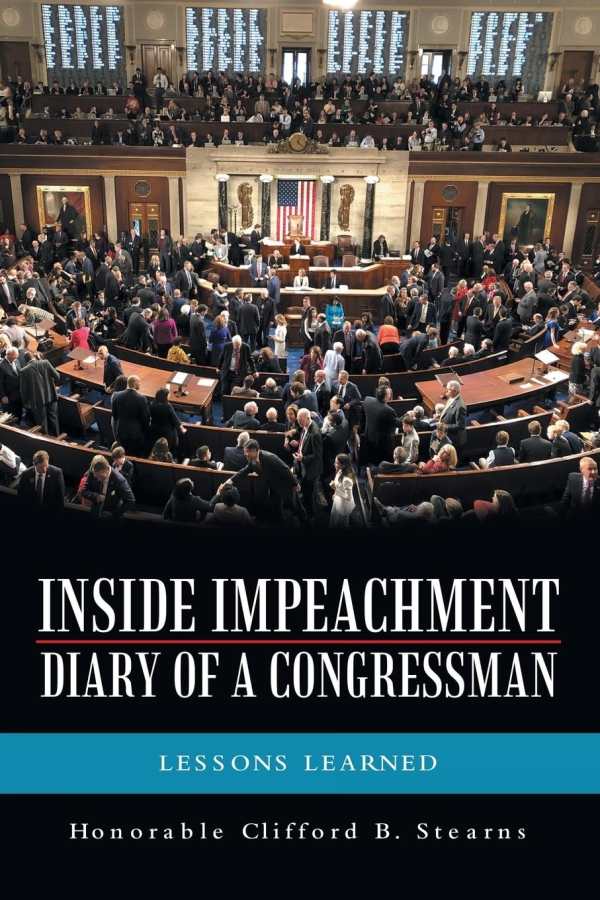Inside Impeachment
Diary of a Congressman
Inside Impeachment is a valuable primary resource regarding the trials of Bill Clinton.
A blow-by-blow diary of the second impeachment in US history, Clifford B. Stearns’s book Inside Impeachment is an insider’s view of American democracy and the roots of its growing partisan divide.
Beginning with the day in August of 1998 when President Bill Clinton admitted to an inappropriate relationship with Monica Lewinsky, the first half of the book is a diary of the events, debates, and ordinary conversations that characterized the House of Representatives on the cusp of impeachment. The book’s coverage of the arcane inner workings of Congress, including the heated process of allocating offices, is offset by considerations of the ways in which party politics and constitutional duty blurred when it came to considering President Clinton’s culpability. Opinions in favor of and opposed to Clinton’s impeachment are documented in re-creations of behind-the-scenes conversations. And the latter part of the book draws on the impeachments of presidents Bill Clinton, Andrew Johnson, and Donald Trump to argue for protecting the United States Constitution from the whims of political parties. Even-handedness and recurring thoughts on the nature of American government make the book accessible to all.
The diary entries that make up the majority of this book are varied and engaging, balancing the inner musings of a congressman with memories from high-stakes meetings with Newt Gingrich, Matt Drudge, and other key players in the Clinton impeachment proceedings. Conversations with opposing politicians, including José Serrano, who called Clinton a hero for protecting Lewinsky’s honor by denying their relationship, are a compelling window into the practical disagreements of the time, though some read more like fictionalized narratives than firsthand accounts because of their polish. Still, the sharp combination of dialogue and narration is helpful when it comes to explaining and analyzing particular mindsets.
The book’s delivery wanes in its second half. The latter section features edifying charts, with the first three impeachments broken down in graphs that define the charges, outcomes, and historical legacy or future repercussions of each impeachment. But it is also marred by glaring errors: the presidential election of 1800, between Thomas Jefferson and John Adams, is cited as the election of 1880; quotes from historical texts include misspellings or incorrect words; and the prose includes repetitions and incoherent language. Some complicated issues of legal interpretation are rendered in too-simple terms, too, as binaries and without considering opposing viewpoints; the messy question of how to forge a bipartisan consensus out of a divided society is underaddressed. And the book’s work is somewhat diluted by its late-arriving, brief condemnations of social media and discursive thoughts on monopoly busting. Nonetheless, the book’s arguments against excessive partisanship and the manipulation of laws for short-term political gain remain powerful and accessible in the second section, where they are often rooted in the words of notable politicians.
A valuable primary resource regarding the impeachment of Bill Clinton, Inside Impeachment includes a congressman’s diary and analyses of a volatile period in US politics.
Reviewed by
Willem Marx
Disclosure: This article is not an endorsement, but a review. The publisher of this book provided free copies of the book and paid a small fee to have their book reviewed by a professional reviewer. Foreword Reviews and Clarion Reviews make no guarantee that the publisher will receive a positive review. Foreword Magazine, Inc. is disclosing this in accordance with the Federal Trade Commission’s 16 CFR, Part 255.

